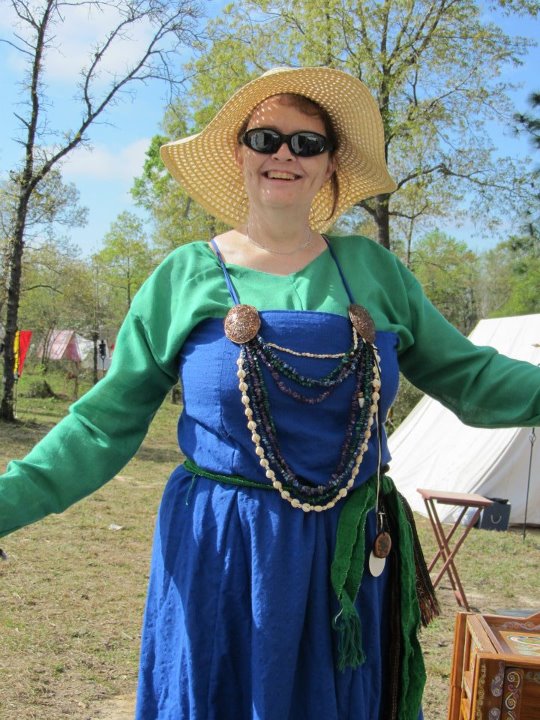Some of my favorite Viking Resources
While Jerusha is technically Late Period (tm) Italian (1480-1580), she is generally currently found in Viking. I can draft Viking patterns. Italian? Not so much.
Rebecca Lucas put together a table of fabric types for aprons, smocks, and straps! She says “I put together information from 37 graves (I was focusing on the ones that had textiles associated with the tortoise brooches, there are more graves out there, promise!) 26 of them didn't have another layer other than linen smock, and apron dress over the top. 6 of these graves appear to have had an apron dress made of linen, too. So an all-linen look is possible.”
There are also 2 Facebook groups: Vikings in the SCA
and
Viking Clothing
There are 2 books – one by Thor Ewing (at Amazon) and the other by Nille Glaesel (also at Amazon). There’s a PDF of some of the patterns online.
Cathy Raymond’s blog has quite a bit of Viking stuff on it as well.
An in-depth summary of the archaelogy on the apron and the tunic are also available.
Sunnifa’s Viking Age Clothing Class Handout comes in several parts. She also has several other good handouts. Click on the "Projects -> Sunnifa's Projects" link to see them.
For the tunic – there’s a lot of variations on a theme ...
The potential variations are summarized here and here (this is a good archaelogical summary, and he does the same thing for shoes).
This is basically how I make my tunics. Which is pretty much the same as this
